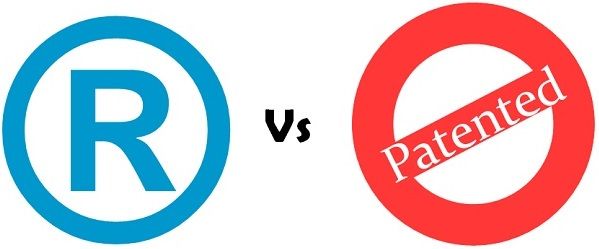 While the trademark is a mark, which can be a word, phrase, an image or anything else used to recognise the source of goods or service. The patent is a right granted to the inventor of something to manufacture, use or sell the invention.
While the trademark is a mark, which can be a word, phrase, an image or anything else used to recognise the source of goods or service. The patent is a right granted to the inventor of something to manufacture, use or sell the invention.
An idea remains an idea until and unless it is not transformed into something that has value. Once the idea is converted into a human creation, i.e. product, design, or any artistic work, it becomes intellectual property. Intellectual property is classified as industrial property, which covers trademarks, industrial designs, inventions (patents) and copyright which covers artistic and literary work.
Most of the startup founders and existing businesspersons, utter confusion in trademark and patent, as in for what they are used and how they protect something of value. Take a look at the given article to understand the differences between trademark and patent.
Content: Trademark Vs Patent
Comparison Chart
| Basis for Comparison | Trademark | Patent |
|---|---|---|
| Meaning | Trademark connotes a symbol, which is used by the companies to distinguish their products or services from those of the competitors. | Patent is described as the monopoly conferred by the government, for a set period over a new and useful invention. |
| Applicable to | Marks or symbols on goods, which represent the brand offering the item. | Inventions of any kind. |
| Protection | Protects goodwill tied with the mark. | Ideas, which are turned to reality. |
| Awarded for | Distinctiveness | Novelty and non-obviousness |
| Prevents | Other from using a mark which too nearly resembles with the company's mark. | Others from producing, using or selling the patented product. |
| Registration | Discretionary | Compulsory |
| Term | 10 years | 20 years |
Definition of Trademark
The term ‘trademark’ is used to mean a visual symbol, which indicates the source of product or services. It entails signature, name, label, logo, slogan, combination of colours, numerals, or any of these elements, used to distinguish the product or service from other similar goods or services.
In short, a trademark is a distinctive sign, which recognises certain goods or services, produced under a specific brand name. It is used to provide protection to the mark owner, by granting an exclusive right for using it or to authorise another party to use it for adequate consideration.
One can register the trademark with the appropriate authority for availing its use over a number of years. The period of protection differs. However, it can be renewed end number of times, by paying additional fees. One of the major advantages of the trademark is that the protection hampers the efforts made by unfair competitors, i.e. counterfeiters, to use a similar mark to sell the inferior quality product.
Definition of Patent
By the term ‘patent’ we mean the exclusive rights conferred by the government of the country, for a definite period, to the owner of the invention, for the new and useful invention which encompasses an innovative step. It can either for a product or process. It empowers inventor to exclude others from producing, using or selling the patented invention.
The inventor enjoys proprietary rights over the patented invention and authorises the patentee (agent) to use the invention. The greatest benefit of the patent is that the product is prevented from unauthorised use, during the term of the patent. The registration of patent is obligatory, i.e. one has to get the invention to avail the benefits of protection. Further, patentability requires the invention to be novel, non-obvious and industrially applicable.
Key Differences Between Trademark and Patent
The following points are noteworthy so far as the difference between trademark and patent is concerned:
- Trademark is described as the mark or symbol that uniquely identifies the product or services from those produced by other traders in the market. A patent can be understood as the monopoly conferred by the government of a country, for a set period over a new and useful invention, involving an innovative step.
- Trademark applies to sign, symbol, word, phrases, logos, images or designs; that too nearly resembles with the company’s mark. On the contrary, the patent covers the inventions in any field.
- Trademark provides protection to the goodwill, associated with the logo, slogan or the combination of these elements. Conversely, the patent protects ideas which are converted to reality.
- A trademark distinguishes one product from another, in the market and so it is awarded for distinctiveness. In contrast, the patent is awarded for novel and non-obvious invention.
- Trademark prevents others from using a mark which too nearly resembles with the company’s mark. As against this, the patent prevents others from producing, using or selling the patented product.
- The registration of the trademark is discretionary, i.e. it is up to the businessperson, whether or not to register the trademark. On the other hand, registration of patent is compulsory.
- The duration of registration of a trademark is ten years, whereas the patent is valid for twenty years.
Conclusion
In a nutshell, trademark gives protection to the owner of the mark, by providing the exclusive right to use it or authorise another person to use it, in exchange for payment. The patent, on the other hand, means a legal document given to the owner of the invention, by the statute permitting him to forbid any person from exploiting the invention commercially for a stipulated period.






Raymond L Olson says
Your article was most informative and helpful.
susanna gibson says
good information, helpful to know the difference